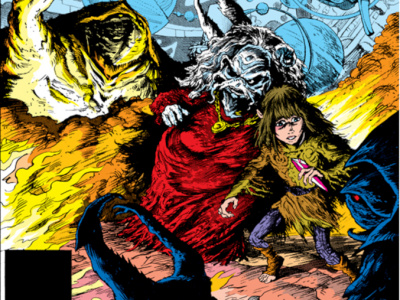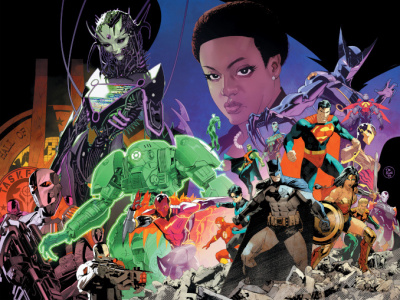Total comic and graphic novel order dollars dropped 11% in October compared to the year-ago period, reflecting a strong October last year. Orders were down less than 1% vs. October 2000. Periodical comics accounted for all of the drop; initial U.S. direct market dollar orders were down about 13% vs. a year ago, with graphic novels showing a robust 14% gain. Comics were only down 2% vs. October 2000, with graphic novels showing an 8% gain vs. 2000 numbers.
Three of the Big Four were down vs. 2001, with only Image showing a gain. Marvel was down 26%, DC down 20%, Dark Horse down 5%, and Image up 9% vs. 2001 orders. Dreamwave and CrossGen were, of course, up a lot vs. 2001 numbers. Marvel was the only one of the Big Four up vs. two years ago, with a robust 15% growth rate vs. the two-years-ago period.
Since this is only one month, and October last year was an excellent month for comics, it's way too early to write the obituary for the recent year-long comic market growth period. We interpret these numbers as indicating that sell-throughs dropped in comic stores in August (when these books were ordered), and retailers are adjusting to reflect current demand in their stores. And the continued strong growth of graphic novels indicates where the real strength of the market is now -- in book format products.
These estimates are based on ICv2 estimates of initial raw orders to Diamond North America on titles scheduled for shipment in October 2002. They do not include orders placed with Diamond UK, late orders, advance reorders, distributor over-orders, or reorders.
Marvel, DC, Dark Horse and Image distribute 100% of their comic store orders through Diamond. Some other publishers distribute directly to stores or through other distributors and as a result this analysis may underestimate their sales.
Marvel, DC, Dark Horse, and Image distribute some of their titles through channels other than comic specialty stores, e.g., newsstands and bookstores. These quantity estimates do not reflect distribution through those channels.
The quantities above do not include advance reorders, late orders, or reorders.
Most of the titles on this chart are also distributed to Europe by Diamond UK, which can account for significant sales for the publisher, ranging from 3-20% of the US numbers. Sales by Diamond UK are not included in the numbers above.
Even given the above, however, it is probably safe to say that these quantities reflect 80% or more of the total North American sales by the publisher on most periodical comics.
One other factor to consider is that sales through Diamond and other comic distributors are non-returnable to retailers. That means that there is a considerable unknown percentage of books unsold at the retailer level. If that percentage is 10-20% of sales (a reasonable assumption), the estimates above may be quite close to actual sales to consumers.
For an over-view and analysis of the best-selling comics and graphic novels in October, see 'Top Comics Slide in October.'
For the top 300 comics in October, see 'Top 300 Comics--October 2002.'
For the top 50 graphic novels in October, see 'Top 50 Graphic Novels--October 2002.'
For an overview and analysis of the dollar orders for September and Q3,
For the top 300 comics in September, see 'Top 300 Comics -- September 2002.'
For the top 50 graphic novels in September, see 'Top 50 Graphic Novels -- September 2002.'







